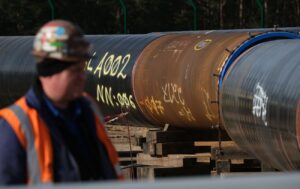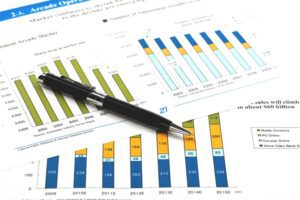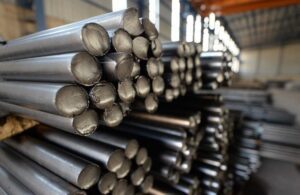
The actual selling price of oil and condensate used in determining the royalty for subsoil use in August 2023 amounted to UAH 19,775/tonne, which is 15.1% more than in July (UAH 17,178/tonne). The relevant data is published on the website of the Ministry of Economy of Ukraine.
As reported, in January 2023, the actual selling price amounted to UAH 13,297/tonne, in February – UAH 13,251/tonne, in March – UAH 12,522/tonne, in April – UAH 15,515/tonne, in May – UAH 14,158/tonne, in June – UAH 14,673/tonne, in July – UAH 17,178/tonne.

The spot price of gas in Europe soared above $2,700/ths. cube m for the news about the new repair on the Nord Stream highway.
The price of the nearest (September) TTF futures on the ICE Futures exchange on Friday evening reached $2,712 per thousand cubic meters.
On Friday evening, Gazprom announced that the only working gas-compressor unit of the Nord Stream main’s departure compressor station at the Portovaya CS would be shut down from August 31 to September 2 for three days for maintenance and scheduled preventive work.
The gas pipeline is capable of transporting up to 167 million cubic meters per day. m of gas, but the capacity was reduced due to the violation of the maintenance schedule for the equipment of the starting station of the sea main – the compressor station “Portovaya”. It is equipped with gas compressor units from Rolls-Royce, whose gas turbine business has been taken over by Siemens. Due to Canadian sanctions imposed in response to the military aggression of the Russian Federation in Ukraine, one turbine did not return to Russia from the Siemens Energy repair base on time. In the meantime, the time has come for a major overhaul of other engines, both in connection with the operating time between overhauls and in connection with breakdowns.

The Bloomberg Commodity Spot commodity price index has already fallen by 20% since it reached a historical record a month ago.
The calculation of the indicator includes 23 futures contracts for energy carriers, metals and agricultural crops.
Despite ongoing supply disruptions, prices for everything from gasoline to wheat are falling on concerns that a stagnating global economy will weigh on demand. This may provide some help in the fight against high inflation in many countries, Bloomberg notes.
Fears are growing in the US that the Federal Reserve will not be able to tame the highest inflation in four decades without plunging the economy into recession. The sharp rise in the US dollar, which makes buying raw materials more expensive for representatives of other countries, also affected commodities traded in the United States. Hedge fund bets that commodities will rise in price have fallen to their lowest level in almost two years.
However, a recession is a “highly anticipated issue” and markets have “clearly overreacted” by bringing commodity prices back to pre-war levels in Ukraine, said portfolio manager Pacific Investment Management Co. Greg Sharenow. Supplies of commodities such as oil remain limited and vulnerable to disruption, he said. The expert expects a resumption of demand in the coming months against the backdrop of China’s economic recovery.

The rate of bitcoin against the US dollar fell on Monday to a minimum of six weeks against the backdrop of a general risk aversion from investors due to signals of the “hawkish” mood of the Federal Reserve System (Fed).
The value of the cryptocurrency fell during trading to the lowest level since March 15, $38,223, which is 20% lower than the peak level recorded last month. As of 15:00 CST, the bitcoin rate is $38,812.
Ether (Ether) on Monday fell to $ 2799 – a minimum since March 18.
Experts note that technical analysis indicators point to the possibility of a further rollback of bitcoin.
“Bitcoin breaks a key two-month trend line, which could mean a further pullback to January lows,” said Fundstrat analyst Mark Newton, quoted by Market Watch. He expects bitcoin to drop to $36,300, and if it goes lower, he could test the $32,950 level.
Currently, bitcoin is closer to the lower end of the $35,000-45,000 price range in which it has been trading since the beginning of this year.
The dynamics of the cryptocurrency clearly correlates with the dynamics of the Nasdaq 100 index of technology companies, with a negative correlation with the dollar.
As investors wait for a substantial increase in the base interest rate by the Federal Reserve System (Fed) in the coming months, some of the factors that support the demand for cryptocurrencies are fading away.
“As it becomes more profitable to hold dollars, investors can shift funds from bitcoin or gold,” Nydig experts say. “We see a negative correlation of bitcoin’s performance with both the dollar and interest rates.”
Bitcoin’s momentum is still largely driven by fundamental factors such as user growth and the expansion of the crypto usage network, but it’s important to understand the emerging macroeconomic links as well, says Nydig.

On Wednesday, March 9, the prices of Ukrainian U.S. dollar-pegged eurobonds rose by another 4.5-10%, and in general since last Friday their growth reached 20-43%.
According to Bloomberg, the price of the shortest bonds maturing in September 2022 at the end of Wednesday was 45.4% of par, which corresponds to a yield to maturity of 270.9% per annum, while at the end of last week the rate reached 362.4%.
Eurobonds maturing in 2023 were quoted at a rate of 86.4% per annum, in 2024 – 68.5% per annum, in 2025 – 50.6% and in 2026 – 43.8%.
Rates on securities maturing in 2027-2028 fell to 39-40% versus 49-51% last Friday, and on longer-term bonds maturing in 2029-2031 they amounted to 32.6-28.1%, while their price was equal to 30% of the nominal versus 21.8% at the end of last week.
Euro-pegged bonds maturing in 2026 were quoted with a yield of 46%, in 2030 – 26.2%.
The rate of VRIs rose by 7.5% on Wednesday, and by 54.5% since Friday, and now stands at about 22.8% of the nominal value.

In the first ten days of October, an upward price trend continued on the regional iron markets under the influence of the rise in prices for scrap metal and iron ore raw materials, Ukrainian Industry Expertise (UEX) said in a press release on Monday.
At the same time, in the U.S. market, consumers are under pressure from a deficit and a rapid rise in prices for high-quality scrap grades, so buyers are forced to return to contracting cast iron. Also, most of them are trying to accumulate sufficient stocks for the winter, buying large quantities without waiting for the rise in prices for raw materials. Despite the growth in demand and prices, producers of raw materials are in no hurry to unload warehouses, as they expect to maintain an upward trend in the coming month. As a result, cast iron quotes increased to $600-610 per tonne CIF.
A significant rise in the cost of flat products and a shortage of material on the Italian domestic market pushed the quotes for cast iron to rise to $590-595 per tonne CIF. The factories are experiencing a supply deficit driven by an increase in cast iron consumption in Turkey and the United States.
According to forecasts of the UEX analyst Yuriy Dobrovolsky, in the coming weeks the quotations of cast iron will increase amid the rising cost of scrap metal and the exhaustion of stocks at large importers. The prices will also be supported by a low supply from the main suppliers from Russia and Brazil, as well as the active creation of winter stocks by the main importers in Turkey and the Asian region.
In the second half of October, scrap prices continued to rise rapidly due to the catastrophic shortage of raw materials and the active formation of winter reserves by large importers of scrap.
In Turkey, deals are being made in all directions, with buyers willingly making concessions to suppliers, fearing that the upward trend will continue in the near future. The problem remains with the prompt supply of material for the current production programs amid weak internal scrap procurement. As a result, at the beginning of the second decade of October, quotations of scrap HMS 1 & 2 (80:20) rose to $500 per tonne CIF, which is $25 per tonne more than a week earlier. Crushed raw materials are traded by $10 per tonne more – at the level of $510-515 per tonne CIF.
In the Asian market, scrap prices are also moving rapidly upward on the back of growing demand for long products and a lack of supply in the domestic market. Japanese scrap suppliers noted an increasing demand for the material in the domestic market, which limits the volume of supplies to foreign destinations. As a result, scrap HMS1 rose in price to $490 per tonne CIF.
UEX analysts predict in the near future an increase in the price of scrap metal in connection with the replenishment of stocks by the largest buyers and the creation of reserves for the winter period. The quotes will also be supported by the dwindling supply of material from American and European suppliers, who feel a shortage of scrap in the domestic markets of their countries.